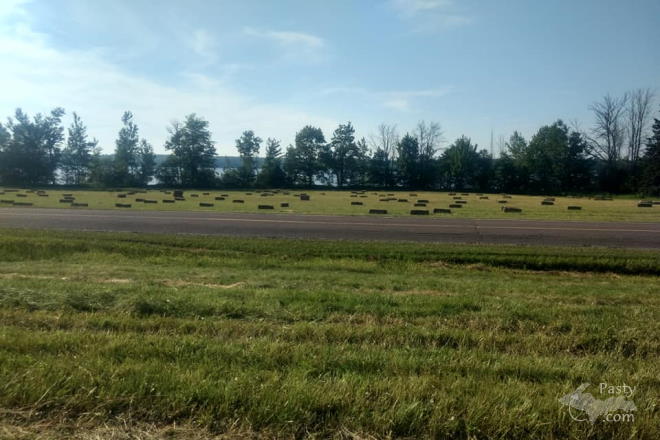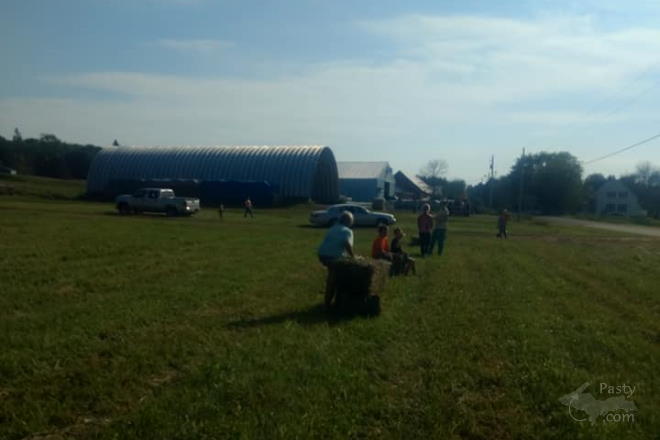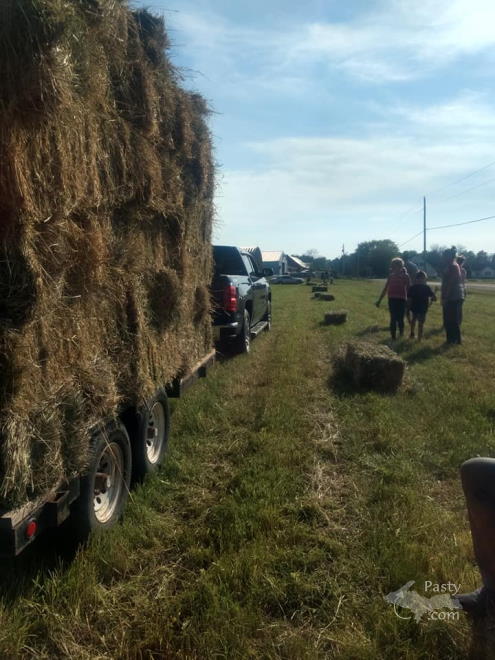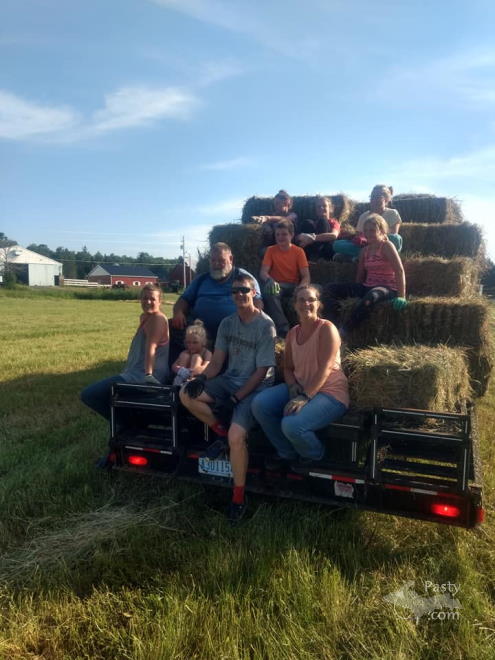By FRNash/PHX, AZ (Frnash) on Sunday, July 12, 2020 - 04:13 am:
Mary Drew at Pasty Central (Mdrew):
"… On this day, the Rheault family was baling the smaller 'square' bales, which are a little more labor intensive than the big round bales, since each bale has to be handled separately."
Well, I suppose it's true that the smaller 'square'1 or more precisely 'rectangular cuboid'1) bales are more labor intensive, but their advantage is that they can be handled by one person, compared to those huge 'round' (cylindrical) bales that must be moved about with a specialized attachment on a tractor.
I've spent plenty of hours slinging those 'square' bales, stacking 'em on a haywagon, hoisting 'em up into the hayloft, and later tossing then down and breaking 'em up to feed the cowsies. They're quite manageable.
In earlier years, I spent many hours slinging loose hay up on the hay wagon with a pitchfork, and stumbling around atop a teetering stack of loose hay distributing it all on the wagon.
I can't begin to imagine how those monster 'round' bales are managed. What do they do, leave 'em out in the weather to rot all winter, perhaps covered with a tarp? Surely they can't be stored in a hayloft? How are they disassembled to feed the cowsies? They seem seriously impractical to me, particularly in the snow country of da UP!
1 A mathemagical technicality:
Squares and rectangles are 2-dimensional 'flat' figures.
Cubes and 'rectangular cuboids' (elongated cubes?) are 3-dimensional objects.
(Sorry, I couldn't be caught using incorrect mathemagical nomenclature!)









